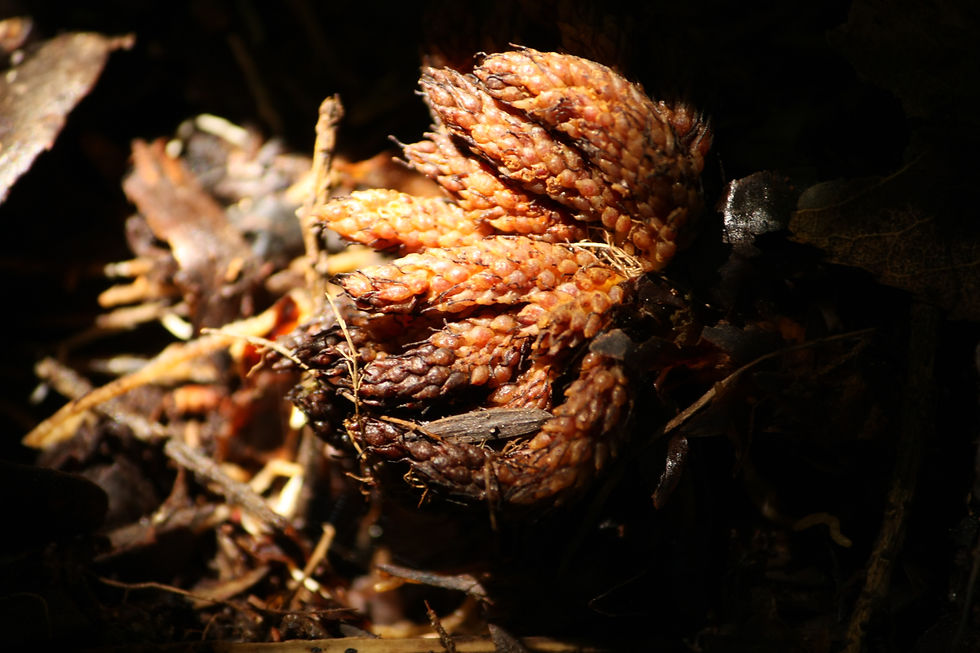

Plants
Rare native species and how we're saving them
ALTITUDINAL CHANGES
As you climb Mt Pirongia you will notice the forest composition changes as you get higher.
Two broad forest types are present. The lower slopes of the mountain are covered in podocarp/broadleaved forest with scattered emergent rimu and rata over a canopy dominated by tawa.
The subcanopy contains tree ferns such as wheki and silver fern, nikau palms and smaller individuals of the canopy trees. Other plants found in this vegetation zone include pigeonwood, hinau, pukatea, supplejack, mahoe, hangehange, kanono and toropapa.
As the altitude increases, these species are gradually replaced by hardy upland trees and shrubs including kamahi, tawari, Hall’s totara, tawheowheo, horopito and, near the summit, kaikawaka.

SPECIAL BOTANICAL FEATURES
Mt Pirongia is the largest area of native forest in the Waikato Basin and exhibits many interesting botanical features.
The Forest Park is of high botanical significance because at this latitude several plant species reach their northern or southern limits of distribution. For example, kauri, mairehau, tawari and taraire reach their southern limit near the park whilst kaikawaka is at its northern limit for the western side of the North Island.
Near the summit, rocky pinnacles support a few species such as snow totara and eyebright more commonly found in true sub alpine zones.

THREATENED SPECIES
Several threatened plants are found in the park including king fern, carmine rata and Thismia rodwayi.
Dactylanthus taylorii (wood rose) is also present at higher altitudes and Pirongia is considered a national stronghold for this threatened species.
The plants are caged to protect them from possums and rats. Our team of volunteers cage any new plants and repair any damaged ones.